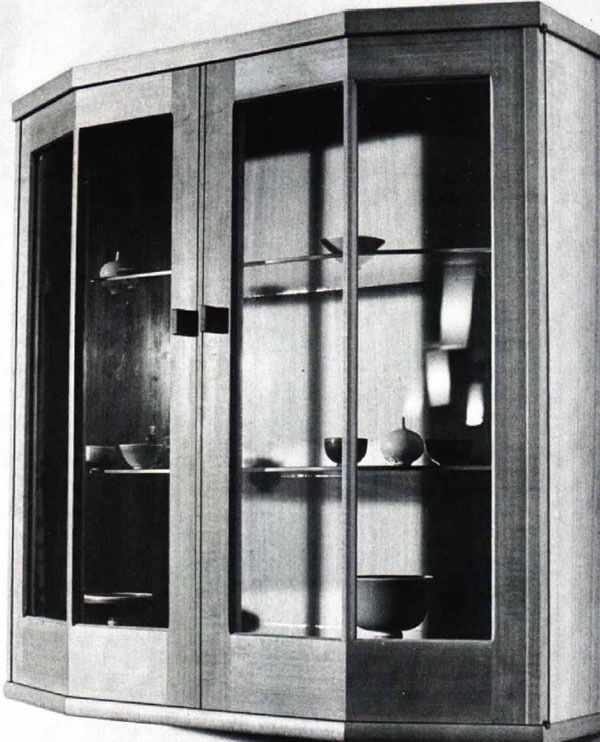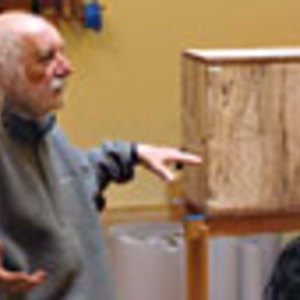Showcase Cabinets
The delicate interplay of glass and wood
Synopsis: The technical problems of doors with thin wood parts and closely fitted glass may discourage cabinetmakers from making more showcase cabinets, writes James Krenov. He shares ideas on balancing the function with the craftsmanship and covers proportions, curves, the main steps toward making them, and each practical step in construction. He recommends having a glazier cut the glass to fit. The article is filled with pictures exploring design options and construction methods.
It is a puzzle to me why there are not more interesting showcase cabinets around. Certainly, living habits don’t exclude this type of furniture. We do accumulate objects that are pleasing to behold and deserve a nice home of their own. Perhaps too many people have a preconceived, discouraging notion about showcase cabinets. Cabinetmakers may share such prejudices. Or the technical problems of doing doors with thin wood parts and closely fitted glass may discourage cabinetmakers. I suspect this is so.
A way of getting past these problems is to use pretentious, special-effects glass and wild wood in all sorts of bubbly shapes. Interesting, although we may be missing opportunities by not taking advantage of the effects that simple glass set in pleasing facets can create. Work with glass and wood, if it is to succeed, demands great accuracy, patience and a way of conceiving and then doing a piece that is different from what some of us have been involved with.
Someone says, “Showcase cabinets do not use enough wood!” This can be true. One is prompted (by mirrors and such) to forget, or at least to neglect, that this is in fact to be a cabinet, not an aquarium or a bar.
At first, I, too, thought showcases were not truly cabinets. Then, because I liked the function of such pieces, I attempted to achieve some sort of balance between the wood and glass as related to the purpose of the piece. The real challenge is the pleasing interplay between you as craftsman and those who will use the showcase. You express something personal—your own version of a concept that is also a certain mood, while making something for someone to use and enjoy. Through usage the piece will achieve further expressions.
Whatever mild interest I had in showcases from the outset has increased since then. It needn’t always be so. Even a craftsman who tries to make such pieces with an open mind and a sense of the possibilities may conclude that it’s not for him. Certainly, one of the things we should try to determine as craftsmen is the sort of work that is really for us. We are by our nature (the sum total of the traits we have or do not have) either finely tuned, meticulously inclined, or a bit of the opposite, the kind of people who do rough-cut, “unorganized” work. In the latter case this type of cabinetmaking is a frustration. Probably after trying we will then leave it. For those who discover something interesting here, I think such work leads to further discoveries and increased interest. Through one possibility you come to the next, and the next. That’s the essential difference in our work between monotony or routine and this other thing, which really keeps it alive through the years.
From Fine Woodworking #18
For the full article, download the PDF below:
Fine Woodworking Recommended Products

Dividers

Compass
























Log in or create an account to post a comment.
Sign up Log in